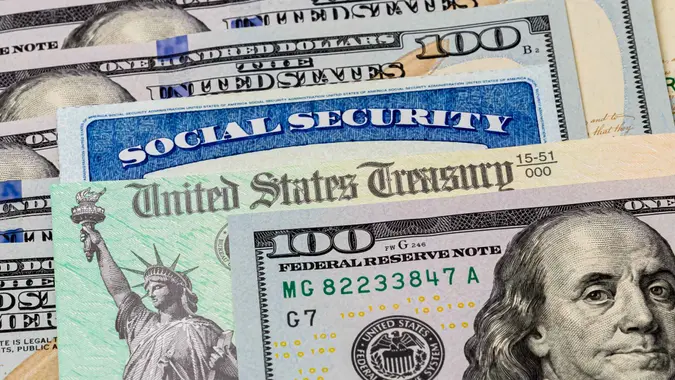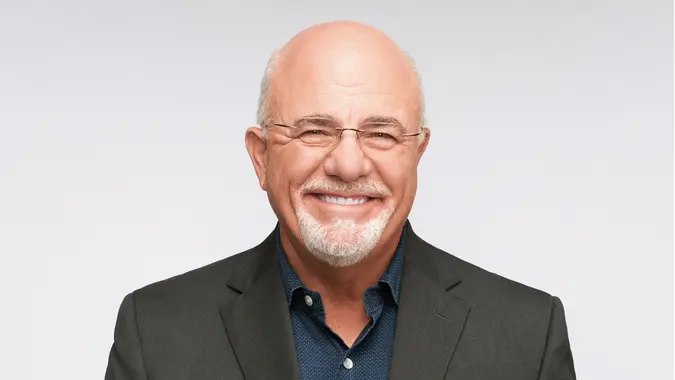Social Security: New Data Shows Program’s Major Trust Funds Gone by 2033

Commitment to Our Readers
GOBankingRates' editorial team is committed to bringing you unbiased reviews and information. We use data-driven methodologies to evaluate financial products and services - our reviews and ratings are not influenced by advertisers. You can read more about our editorial guidelines and our products and services review methodology.

20 Years
Helping You Live Richer

Reviewed
by Experts

Trusted by
Millions of Readers
Future Social Security beneficiaries are probably aware that their payments won’t be as big as those of previous generations. The question is when you can expect payments to go down. At least one group estimates it will happen as soon as 2033.
In a recent report, the nonpartisan Congressional Budget Office analyzed current Social Security trust funds, which are used to pay part of the program’s benefits. Based on its analysis, the CBO projects that the balance in the Old-Age and Survivors Insurance Trust Fund will be depleted by 2033. The OASI is used to partly fund retirement benefits.
The separate Disability Insurance Trust Fund, used to pay disability benefits, is expected to be exhausted in 2048. The CBO estimates that if the trust funds were combined, their exhaustion date would be in 2033.
The CBO’s projections differ from those of the Social Security and Medicare boards of trustees, which last year issued a report estimating that the OASI trust fund will be able to pay scheduled benefits on a timely basis until 2034. Trustees projected that combined OASI and DI funds would be able to pay scheduled benefits on a timely basis until 2035.
Lawmakers, senior advocacy groups and the general public have been keeping an eye on the trust funds for many years amid a rise in federal spending on Social Security. The main reason for that rise is that the percentage of Americans at or above retirement age has increased relative to the active workforce, driven by the baby boomer generation hitting retirement age. One result is that the program’s trust funds have been drained faster than previously expected.
It’s important to keep in mind that just because the trust funds face depletion, that doesn’t mean Social Security will run out of money. The vast majority of funding for the program — more than three-quarters — comes from payroll taxes. That’s the case for both retirement and disability benefits.
However, it does mean that Social Security payments will likely be much smaller in the future. According to the CBO report, if Social Security retirement benefits are funded solely by payroll taxes, benefit payments would go down by about 23% beginning in 2034. That aligns with the Board of Trustees’ estimate that continuing tax income will be sufficient to pay 77% of scheduled benefits. The gap would rise over time until benefits become 35% smaller by 2096. After that, the gap would remain stable.
As previously reported by GOBankingRates, among the proposals to restore balance is for Congress to immediately reduce scheduled benefits by about 20% to account for the projected shortfall. The required reduction would gradually increase to 26% by 2096. Another option would be for Congress to raise the Social Security payroll tax rate from its current 12.4% to 15.6% following the trust fund depletion, and then gradually increase it to 16.7% by 2095.
Meanwhile, a plan released last summer by the Republican Study Committee would realign the Social Security full retirement age to account for increases in life expectancy. Doing this means the FRA for Social Security would increase to age 70 from the current FRA of 66 and 67 years old, which would theoretically bolster Social Security funds.
More From GOBankingRates
 Written by
Written by  Edited by
Edited by 
























